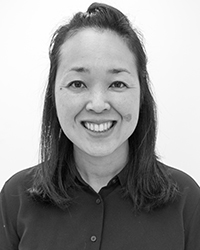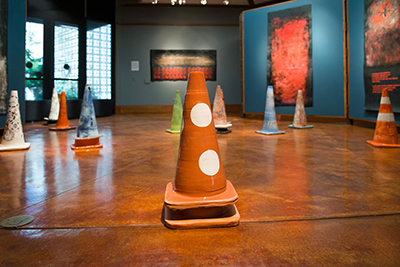Amiko Matsuo
 Amiko Matsuo (Joined the AHC Art faculty in ceramics in Fall 2017)
Amiko Matsuo (Joined the AHC Art faculty in ceramics in Fall 2017)
- BA in Art from UCLA, where she studied with Adrian Saxe
- MFA from Kansas State University, where she studied with Yoshiro Ikeda
- She is a translator and scholar of ceramic art history
Matsuo has taught all levels of ceramics for over a decade, and developed an international travel course to rural Japan, where students learned from Japanese artists and helped fire a noborigama wood kiln. She also has expertise in 3D digital fabrication and is a translator and scholar of ceramic history. She looks forward to exploring connections between ceramics and other mediums in the arts and other disciplines so that students have many pathways toward success in the arts and other career goals.
In 2015, Matsuo published Art Place Japan, a translation about an art festival that reconnects people to nature and contributes to the revitalization of a rural area in the mountains of Japan. Matsuo’s writing and art have explored how we might learn from particular Japanese ways of connecting agricultural and natural landscapes. The wine country surrounding Santa Maria offers fertile ground for exploring these practices locally.
 Matsuo’s current installation, “Pyrometric,” connects ceramic firings to wildfire
ecology. It has been exhibited in various venues in Southern California and at the
national ceramics conference in Rhode Island. Matsuo was invited by the US Forest
Service to mount the latest version of “Pyrometric” for an exhibition called “On Fire,”
at the “Visions of the Wild” festival in Vallejo in September. In addition to sculptural ceramic pieces, the installation
will use Phos-Chek, the red flame retardant dropped by air tankers that is often visible
on hillsides after wildfires. The installation inspires reflection on fire and how
people are connected to the plant and animal communities surrounding the places we
live. Collaboration with local firefighters and the US Forest Service has been instrumental
in developing this work.
Matsuo’s current installation, “Pyrometric,” connects ceramic firings to wildfire
ecology. It has been exhibited in various venues in Southern California and at the
national ceramics conference in Rhode Island. Matsuo was invited by the US Forest
Service to mount the latest version of “Pyrometric” for an exhibition called “On Fire,”
at the “Visions of the Wild” festival in Vallejo in September. In addition to sculptural ceramic pieces, the installation
will use Phos-Chek, the red flame retardant dropped by air tankers that is often visible
on hillsides after wildfires. The installation inspires reflection on fire and how
people are connected to the plant and animal communities surrounding the places we
live. Collaboration with local firefighters and the US Forest Service has been instrumental
in developing this work.
In addition to her long experience cultivating community relationships, Matsuo brings a wide range of technical expertise to her classes, from traditional wheel-throwing and hand-building to decorative techniques from Japanese other global traditions. For Matsuo, beautiful ceramic art comes about through critical thinking, collaboration, old and new technologies, and cultural exchange. Art grows out of communities, and art can in turn nourish communities. Art shows how traditions continue, and it suggests ways to welcome new ideas, new directions, and new people.
